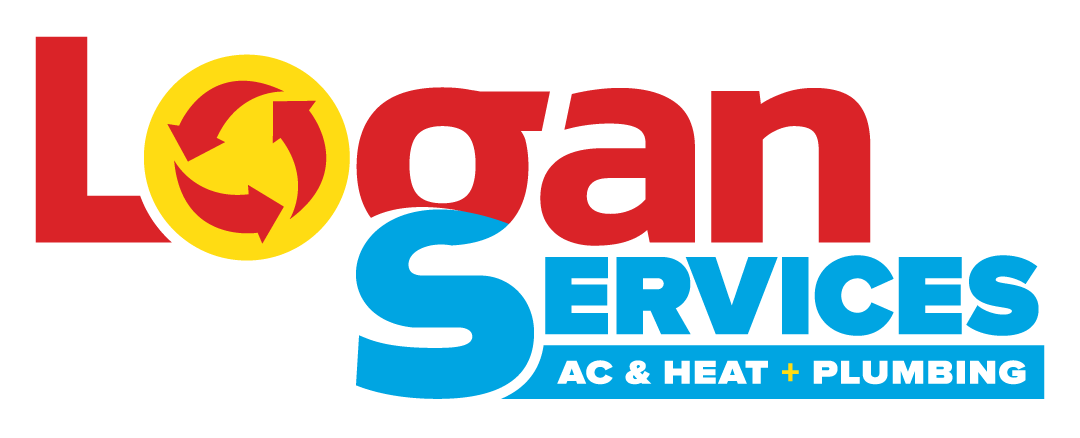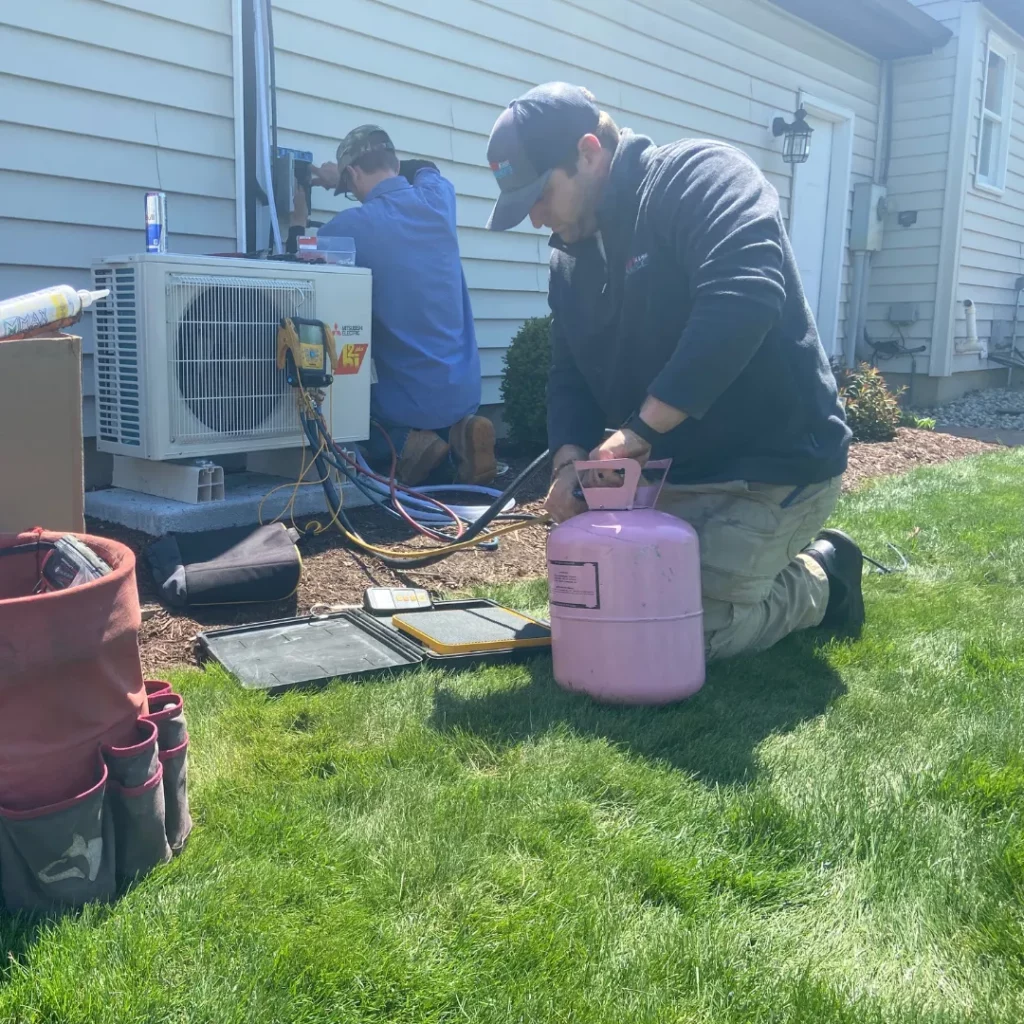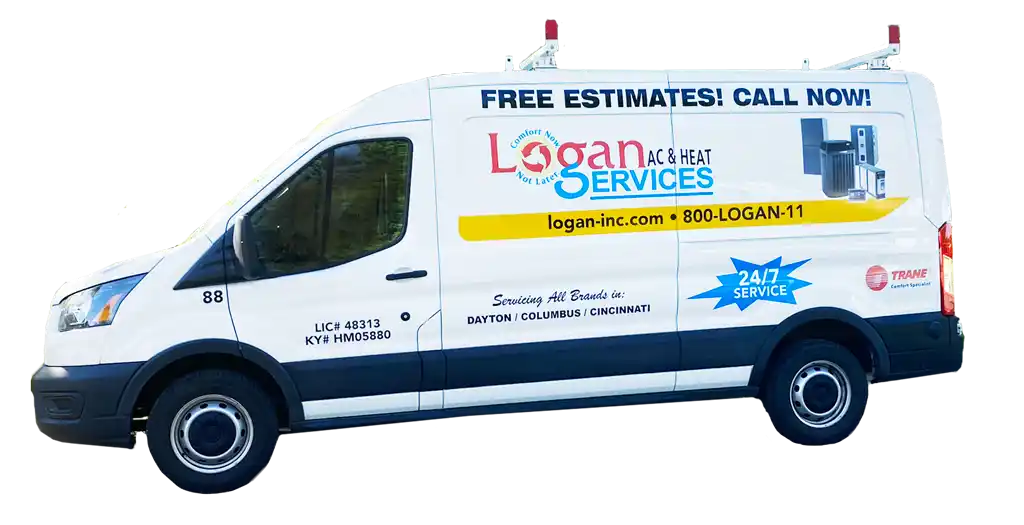Are you curious about the role of refrigerants in AC systems? Do you want to learn about the common types of AC refrigerants and their advantages?
This article covers everything you need to know about AC refrigerant, from the science behind refrigerant properties to regulations and bans on harmful refrigerants.
We also provide tips on AC refrigerant maintenance and troubleshooting, including detecting and fixing refrigerant leaks, recharging your AC system, and proper disposal and recycling of refrigerants.
Understanding the Role of AC Refrigerants in Air Conditioner Systems
AC refrigerant, a vital component in air conditioners, plays a crucial role in the heat transfer process that occurs within an air conditioning system. Evaporator coils are filled with refrigerant, which absorbs heat from indoor air and cools it before being distributed through the vent system. Without the right refrigerant, air conditioners would not function effectively, and rooms would not cool down efficiently.

Refrigerant leaks, however, can compromise the performance of air conditioning systems, causing inadequate temperature regulation and increased energy consumption.
The Science Behind Refrigerant Properties
Understanding the thermodynamic properties of refrigerants is essential to grasp their function in air conditioners and heat pump systems. Refrigerants undergo phase changes from liquid to gas and back to liquid when circulated through an HVAC system. This phase transformation occurs due to the pressure and temperature shifts within the indoor unit of an air conditioner, allowing the refrigerant to absorb and release heat accordingly.

The ideal AC refrigerant must exhibit specific characteristics that facilitate quick and efficient phase change while remaining non-toxic, non-flammable, and environmentally friendly. These properties determine how effectively a refrigerant can absorb heat and cool indoor air.
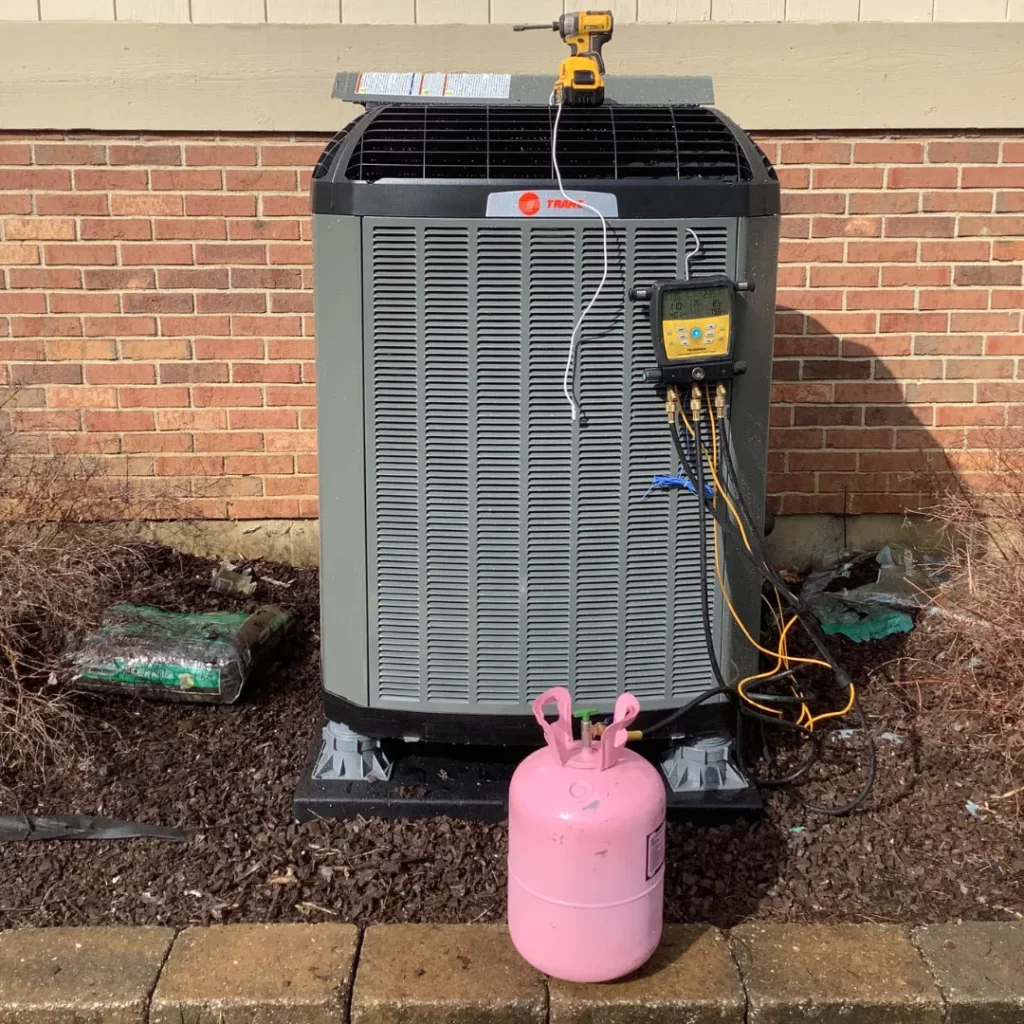
How AC Systems Utilize Refrigerants for Cooling
In an air conditioning system, the compressor, evaporator, and condenser work together to facilitate phase changes and enable the refrigerant to absorb and release heat. These components create a closed-loop system where the refrigerant is circulated, facilitating the cooling process.
An HVAC system utilizes several components, such as an expansion valve, an evaporator, a compressor, and a condenser. The refrigerant undergoes phase changes—evaporation, condensation, and heat exchange—to absorb, transfer, and release heat as it circulates through the AC system. This controlled circulation helps maintain the desired temperature, providing comfort to the occupants of a space.
Common Types of AC Refrigerants and Their Advantages
Throughout history, various types of refrigerants have been developed to improve the efficiency of air conditioning systems. Each generation of refrigerant has come with its advantages and disadvantages in terms of environmental impact, cost, efficiency, and compatibility with air conditioner models.
A Brief History of Refrigerants: From CFCs to HFCs
Refrigerants have evolved over the years, from harmful chlorofluorocarbons (CFCs) such as R-12, which caused ozone depletion and other environmental concerns, to the development of safer and more energy-efficient options, such as hydrochlorofluorocarbons (HCFCs) and hydrofluorocarbons (HFCs). Today, the most widely used refrigerants belong to the HFC family, including R-410A and R-32.
Pros and Cons of Commonly Used Refrigerants
Let’s take a closer look at the advantages and disadvantages of some commonly used refrigerants in modern air conditioning systems.
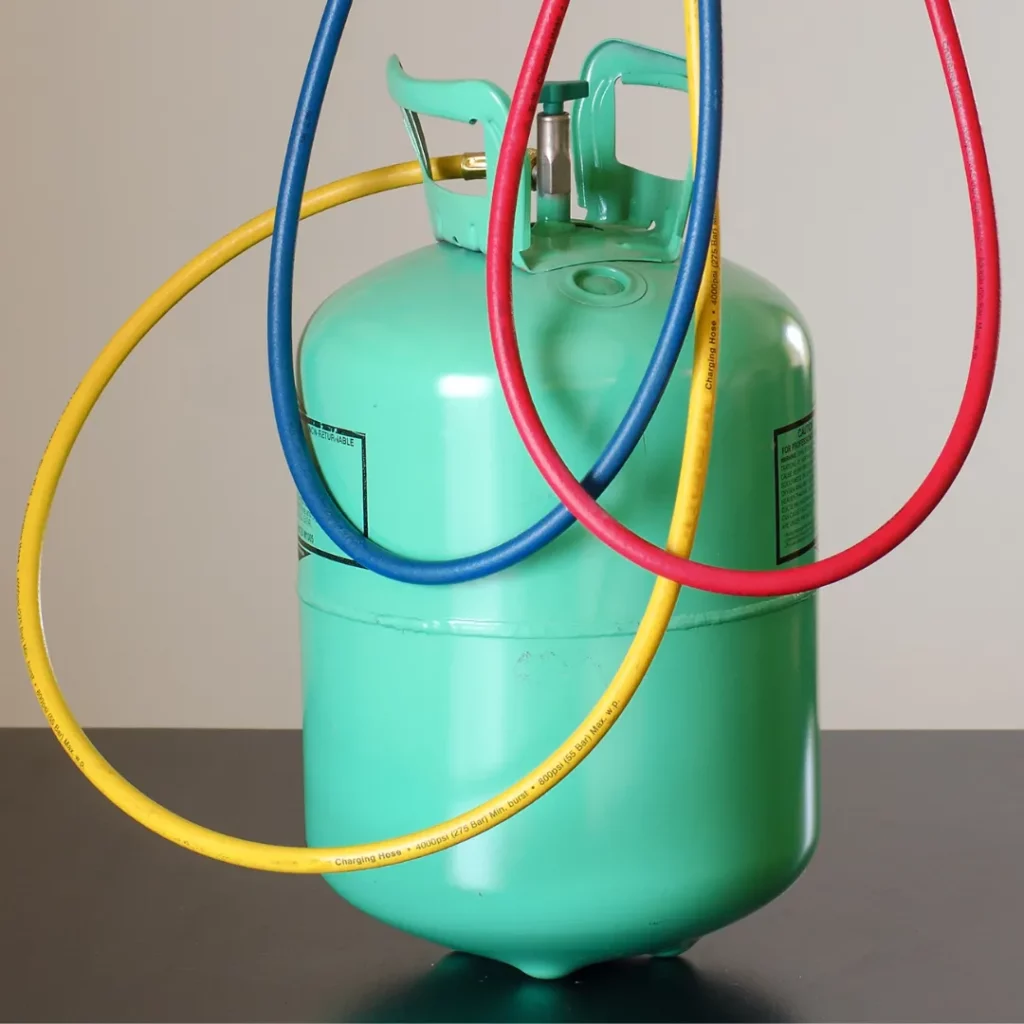
R22 (Freon)
R22, also known as Freon, was a popular AC refrigerant until it was phased out in 2010. R22 is an HCFC, considered less harmful to the ozone layer than CFC-based refrigerants. However, it still contributes to ozone depletion.
Pros of R22
- Effective cooling capability
- Wide compatibility with older air conditioning systems
Cons of R22
- Harmful to the environment
- Production and import restrictions due to regulatory policies
- Higher cost and reduced availability in the market
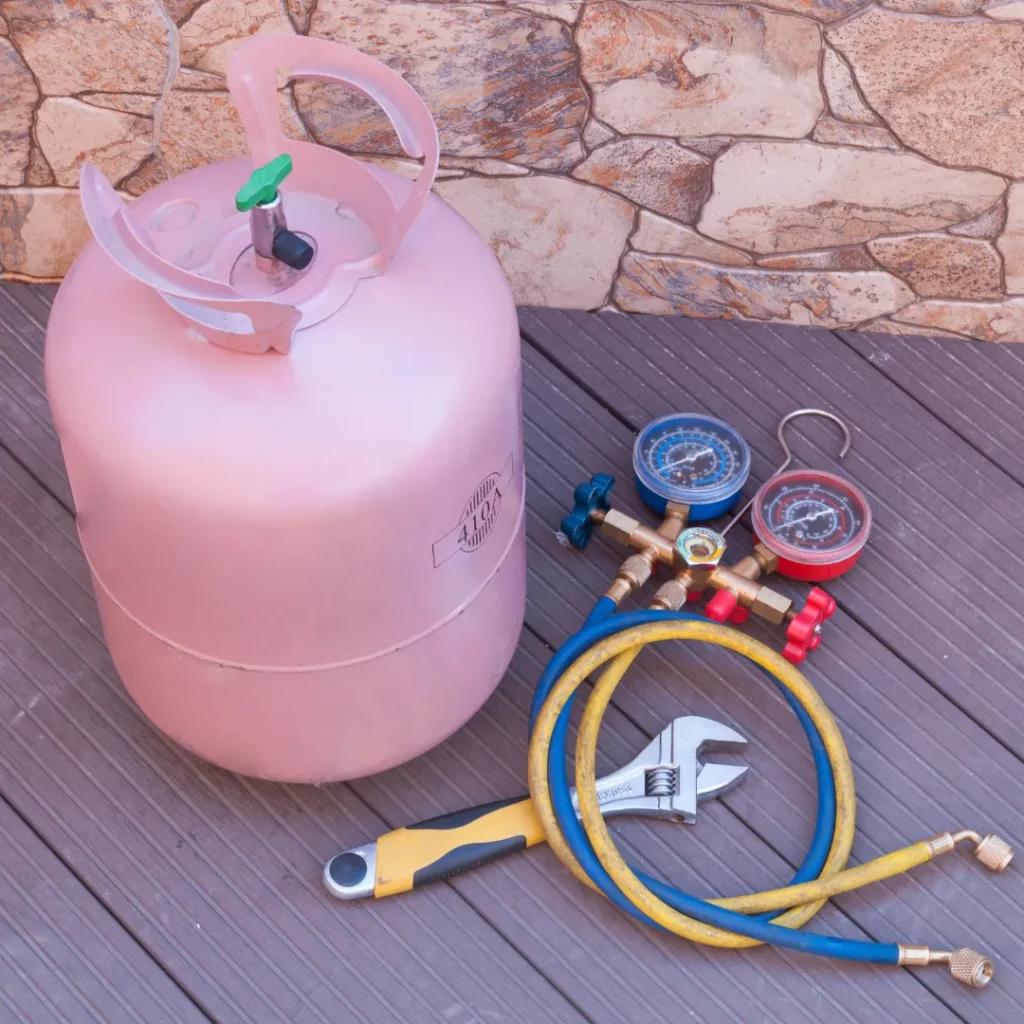
R410A
R410A is an environmentally friendly, non-ozone depleting HFC refrigerant commonly used in residential and commercial air conditioning systems. It is known for its higher energy efficiency and better heat transfer capabilities than R22.
Pros of R410A
- Environmentally friendly
- Superior energy efficiency and cooling performance
- Wide compatibility with modern HVAC systems
Cons of R410A
- High operating pressures can cause issues in older AC systems
- Cannot be used as a direct replacement for R22 without modifications to the air conditioning system
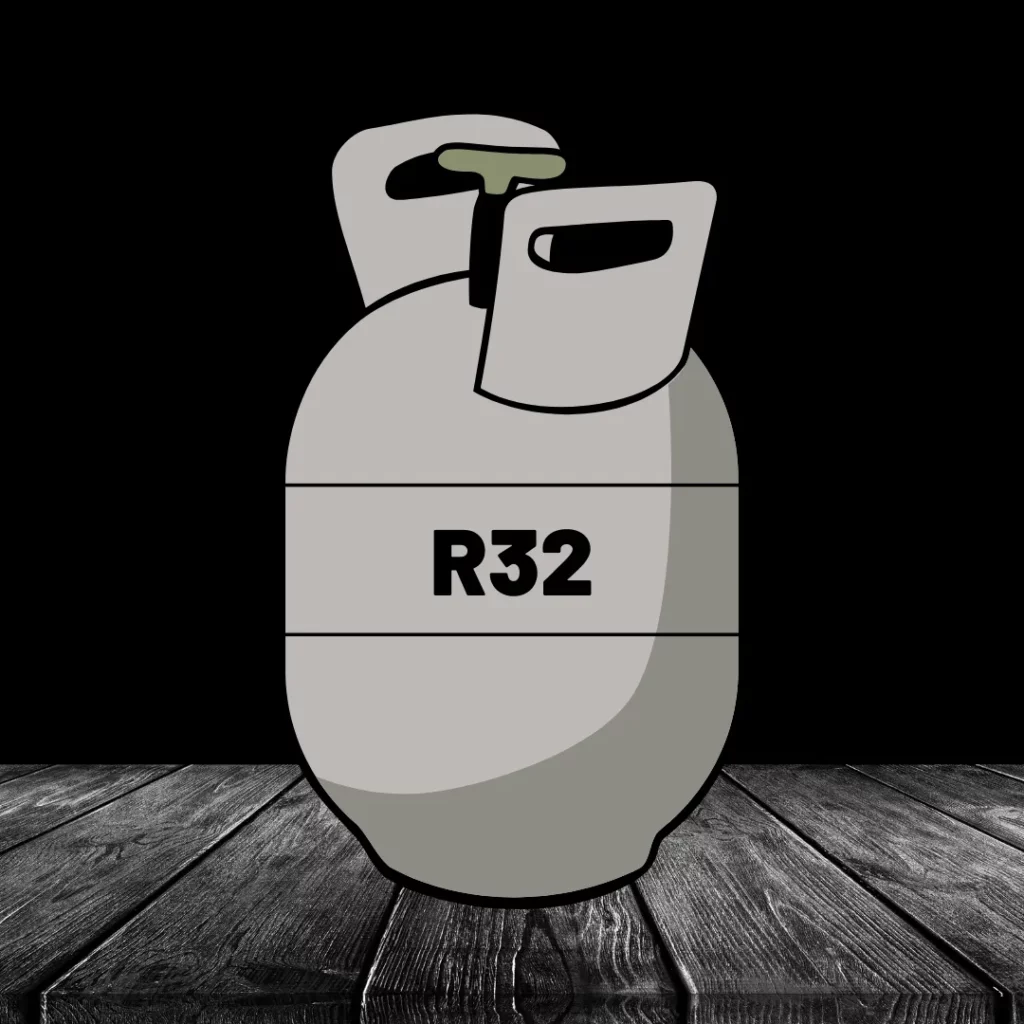
R32
R32 is a newer HFC refrigerant that offers greater energy efficiency and is said to have lower global warming potential compared to R410A. This refrigerant is becoming increasingly popular in modern air conditioning systems for its low environmental impact and superior performance.
Pros of R32
- Higher energy efficiency
- Smaller environmental impact
- Less refrigerant required per system, resulting in more compact air conditioners
Cons of R32
- Higher flammability compared to R410A
- Not suitable as a direct replacement for previous generations of refrigerants without system modifications
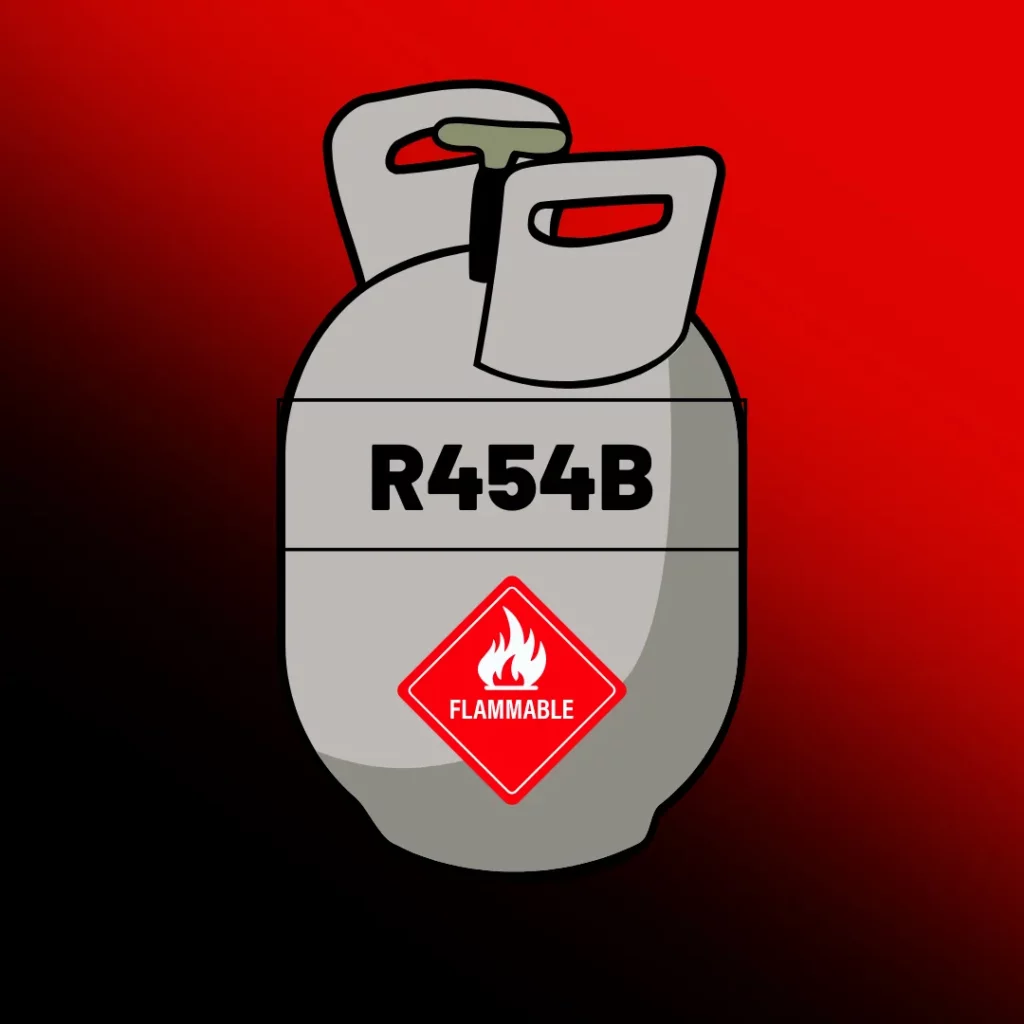
R454B
R454b is a more environmentally friendly alternative to R-410a, which will soon be phased out, similarly to R-22. The industry change should create much lowerenvironmental impact. R-454b will work very similar to previous refrigerants, however homeowners can expect increased efficiency from R454B than what R-410a or R-22 had offered previously.
Pros of R454B
- Better energy efficiency
- Low impact on the ozone layer compared to other refrigerants
- Better supply and availability
Cons of R454B
- Mildly flammable
- Without modifying the A/C system, there is no ability to use as a replacement for previous generations of refrigerants
Environmental Concerns and the Transition to Sustainable Refrigerants
Traditional AC refrigerants pose significant environmental concerns, particularly regarding their impact on the ozone layer and climate change.
As awareness of these issues has grown, there has been a concerted effort to transition to more sustainable and eco-friendly refrigerants. Let’s take a look at the environmental impact of refrigerants, the regulations surrounding their use, and the movement toward more environmentally friendly alternatives.
Regulations and Bans on Harmful Refrigerants
In response to the growing concerns surrounding the environmental impacts of traditional refrigerants, various agreements and domestic regulations have been put in place to phase out their use. One of the most notable is the Montreal Protocol, an international treaty adopted in 1987 that aims to protect the ozone layer by phasing out CFCs, HCFCs, and other ozone-depleting substances. The protocol has effectively reduced the production and consumption of these harmful chemicals.
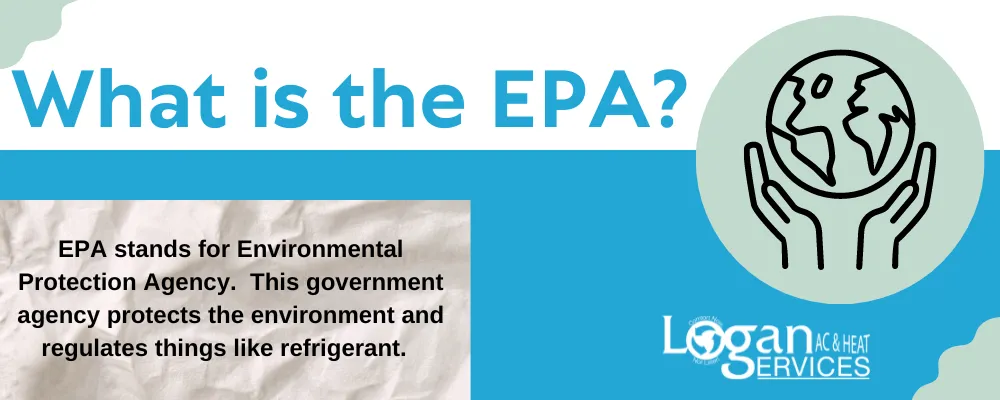
Additionally, many countries have implemented their own policies to restrict or ban the use of certain refrigerants. For instance, the European Union has enacted the F-gas Regulation, which aims to phase down the use of HFCs and promote eco-friendly alternatives. The United States, through the Environmental Protection Agency (EPA), has also set forth regulations to phase out HCFCs and support the transition to more sustainable refrigerants.
Moving Towards Eco-Friendly Alternatives: HFOs, Hydrocarbon Refrigerants, and Natural Refrigerants
In response to the environmental and regulatory pressures, the HVAC industry has been developing and adopting alternative refrigerants that have a lower impact on the ozone layer and climate change. Some of the most promising alternatives include hydrofluoroolefins (HFOs), hydrocarbon refrigerants, and natural refrigerants.
HFOs are a new generation of refrigerants with low environmental concerns and zero ozone depletion potential. They are designed as drop-in replacements for HFCs and have already been adopted in various HVAC applications, including residential and commercial air conditioning systems.
Hydrocarbon refrigerants, such as propane and isobutane, are another viable option due to their low environmental impact and ozone depletion potential. However, their flammable nature and the need for proper handling and risk management require careful consideration during installation and maintenance.
Natural refrigerants, including ammonia, carbon dioxide, and water, also hold promise as sustainable alternatives. These substances have zero ozone depletion potential and minimal environmental effects, making them an attractive option for environmentally friendly HVAC systems. They are already used in various applications, such as industrial refrigeration, heat pump systems, and transport refrigeration.
AC Refrigerant Maintenance and Troubleshooting
Alongside the transition to sustainable refrigerants, the proper maintenance and troubleshooting of your air conditioning system are crucial to ensure optimal performance and minimize the release of harmful substances into the environment.
Detecting and Fixing Refrigerant Leaks
Refrigerant leaks are one of the most common issues with air conditioners and can adversely affect your air conditioning system’s performance, energy efficiency, and indoor air quality. To detect a refrigerant leak, you may notice a decrease in cooling performance, ice formation on the evaporator coil, or hissing sounds coming from the indoor unit. Professional HVAC technicians, such as those at Logan Services A/C, Heat & Plumbing, can use electronic leak detectors, ultraviolet (UV) dyes, or a simple soap bubble test to identify the source of the leak and perform the necessary repairs.
Fixing a refrigerant leak may involve tightening loose connections, replacing damaged components, or sealing small holes and cracks. It is essential to address the underlying cause of the leak and not merely recharge the refrigerant, as this may lead to further environmental harm and higher energy costs.
Recharging Your AC System: DIY vs. Professional Services
When your air conditioner experiences an AC refrigerant leak or the refrigerant levels drop due to wear and tear, it may be necessary to recharge the system to maintain its cooling performance. While some homeowners may be tempted to undertake this task as a DIY project, it is necessary to enlist the help of a professional HVAC technician who is trained in handling refrigerants and ensuring compliance with relevant regulations.
Professional services have the necessary tools, expertise, and knowledge to recharge your air conditioning system safely and efficiently, maintain the correct refrigerant levels and pressure, and ensure that the system is operating optimally. This can reduce the risk of refrigerant leaks and decrease the overall environmental impact of your air conditioner. When you’re looking to call professional HVAC technicians to help repair your AC refrigerant leak, look to Logan Services A/C, Heat & Plumbing.
About Logan Services A/C, Heat & Plumbing
Since 1969, Logan Services A/C, Heat & Plumbing has provided outstanding HVAC services to Ohio residents. Our technicians are thoroughly trained in AC and heat system repair, installation, and maintenance and provide outstanding customer service no matter the job. Whether you need AC repair or are looking to install a new system, give us a call today.
FAQs Air Conditioner Refrigerants
What is an air conditioner refrigerant?
An air conditioner refrigerant is a chemical compound that plays a crucial role in the cooling process of air conditioners. This substance absorbs heat from the indoor air, allowing the air conditioning system to produce cool air for distribution throughout a building.
What is the role of an evaporator coil in an air conditioning system?
The evaporator coil, often housed within the indoor unit of an air conditioning system, is responsible for absorbing heat from the indoor air and facilitating the heat exchange process. The air conditioner refrigerant flows through the coil, extracting heat from the surrounding air and cooling it down, resulting in a comfortable indoor environment during hot weather. The evaporator coil ensures efficient cooling or heating depending on the system’s configuration.
